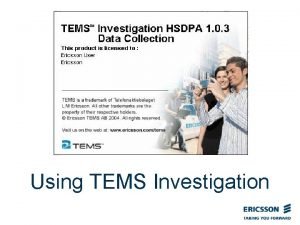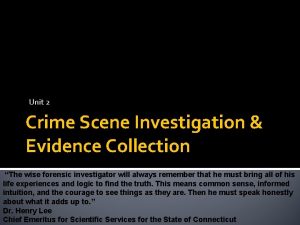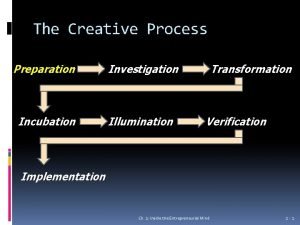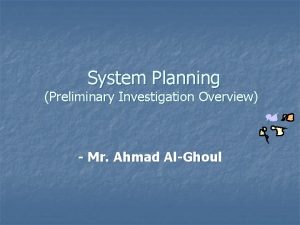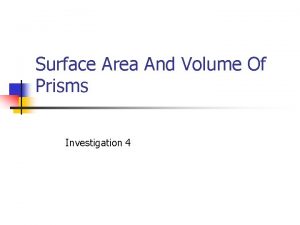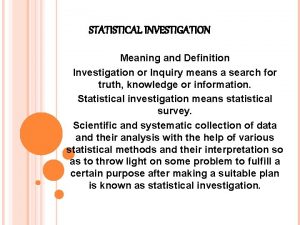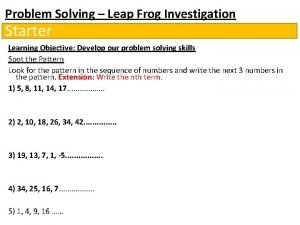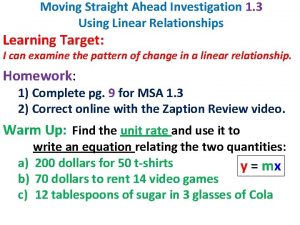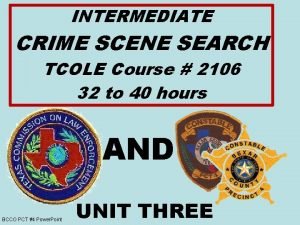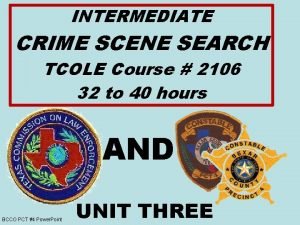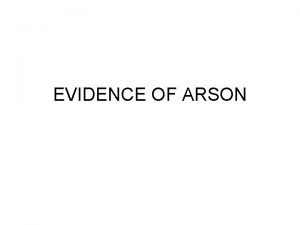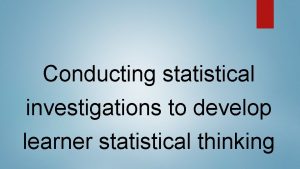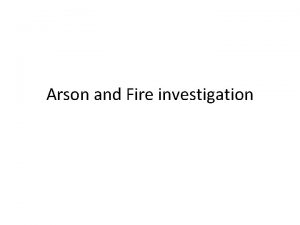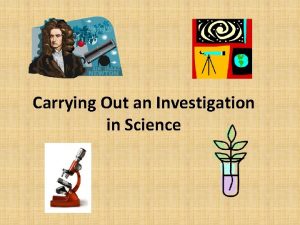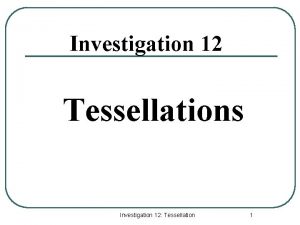Case Study What is case study An investigation























- Slides: 23

Case Study What is case study? • • An investigation of phenomenon in a bounded context A qualitative approach to answer and explain any problem specifically

Case Study needs; • A unit of study or a bounded system • To focus on an experience to answer ‘how’ and ‘why’ • To be dependent on a specific context • to obtain prior knowledge and perspective of the participants

Because… • What we learn from the single case should be compared with the former case to have a reliable result. • Case study resonates with readers’ experiences as it is tangible and illuminative.

HOW do school teachers, principals and managers deal with the new innovations in a school?

We should obtain information from • Participants’ observation, • Interviewing • Written source of data • Non-written source of data

When do we need a case study? On condition that • we need to answer a descriptive question (What happened? ) • or an explanatory question (How/Why did it happen) • We need to study the process

That is why… The study of innovations in the school tries to explain the changing process to predict the future outcomes as well as the experiences of the people in there.

Taxonomy of managing strategies of people in the school: • The study represented the coping strategies of principals, central office personnel and teachers. See the table below:

Characteristics of Case Study • Particularistic • Descriptive • Heuristic Do you have any idea about what they are?

• Particularistic because it provides a detalied and particular explanation of phenomenon (situation or event). • For example, a teacher may investigate individualised education strategy with one child as a supplement to standardized testing procedures.

• Descriptive because the result of the study includes narration and explanation of variables and interaction of the variables.

• Heuristic because the study aims to illuminate the readers’ understanding of the phenomenon beyond the readers original knowledge. The study wants the reader to figure out the phenomenon in detail.

Researchers from different disciplines can use Case Study • Psychology, education, antropology implement case studies. • In education, researchers frequently rely on the disciplines of social sciences such as psychology and sociology for data collection, data analysis and interpretation. For example, psychological studies can be based on an individual’s experiences. The discipline determines the specific characteristics of the study and vice versa*.

*Regardless of the disciplinary orientation, case studies can be characterised by their overall intent as well.

How to design case study research I. Determine the research questions II. Define the case under the study III. Determine the role of theory in case selection IV. Determine theoretical and conceptual framework of the case study. V. Determine whether a single/multiple/collective case study is appropriate.

SAMPLE SELECTION • The most common form of sample selection is ‘purposeful sampling’ including the assumption that you discover and explain for the reader. Viability of the case should be considered at this step: SCREENING is a good way to test the eligibility of the participants.

Data Collection Techniques • The researcher is supposed to collect narrative, descriptive and visual data to answer ‘why’ and ‘how’ • Trianglulation: Using more data sources to collect (more investigators, multiple methods and theories)

Conducting and Analysing • In education research one phenomenon is focused but at multiple sites (multiple case studies, comperative case studies) to improve validity for the research. • Multiple case studies require cross-site analysis.

Analysing the Case Study • Unordered meta-matrix: A chart with descriptive data • Site-ordered descriptive matrix: sides are ordered on a variable of interest to be described • Site ordered predictor matrix: more interpretation/explanation focused than descriptive one • Time-ordered meta-matrix: includes chronology as an organizing variable • Scatterplots: requires visual demonstration of data • Site-ordered effects Matrix: displays cause and effect relations • Casual Models: Displays the probable casual connections between the variables under study

Unordered meta-matrix is a good tool to assemble descriptive data.

A casual model helps the researcher to identify how variables go together

Thank you. References Gay, L. R, Mills, Geoffrey E. , Airasian, Peter W. , Educational research: competencies for analysis and applications. — 9 th ed. (2009) ISBN-13: 9780132338776

Reflections on Tutoring Ancient Greek Philosophy: A Case Study of Teaching First-Year Undergraduates in the UK • Abstract This is a case study of my reflections on teaching a first-year undergraduate tutorial on Ancient Greek Philosophy in the UK. This study draws upon the notion of reflective practice as an essential feature of teaching, in this case applied to Higher Education. My aim is to show a critical engagement with my teaching practices and the overall learning experience modified, developed, or strengthened my practices, attitudes, and teaching philosophy during the course of one term. Methods for data collection included a weekly logbook, student questionnaires, teaching observations, reflective exercises, and peer discussions. The findings shed light on the complexities of teaching Greek philosophy to small groups and the challenges of the practitioner's reflective process in this teaching.
 Extended investigation vce
Extended investigation vce Best case worst case average case
Best case worst case average case Project failure case study
Project failure case study How to use tems investigation
How to use tems investigation What are the seven s of crime scene investigation
What are the seven s of crime scene investigation Mind incubation process
Mind incubation process System planning and initial investigation
System planning and initial investigation Surface area investigation
Surface area investigation Statistical enquiry means........
Statistical enquiry means........ Special triangles 45 45 90
Special triangles 45 45 90 Svg
Svg Security investigation meaning
Security investigation meaning 1982ahmad österreich
1982ahmad österreich Moving straight ahead investigation 1
Moving straight ahead investigation 1 Vce biology poster
Vce biology poster Intermediate crime scene search #2106
Intermediate crime scene search #2106 Crime scene investigation tcole
Crime scene investigation tcole Historical scene investigation
Historical scene investigation William jefferson clinton apush
William jefferson clinton apush Forensic science foodborne outbreak investigation answers
Forensic science foodborne outbreak investigation answers Forensic science vocabulary
Forensic science vocabulary Fire and arson investigation ppt
Fire and arson investigation ppt Ggara
Ggara Statistical investigations examples
Statistical investigations examples



